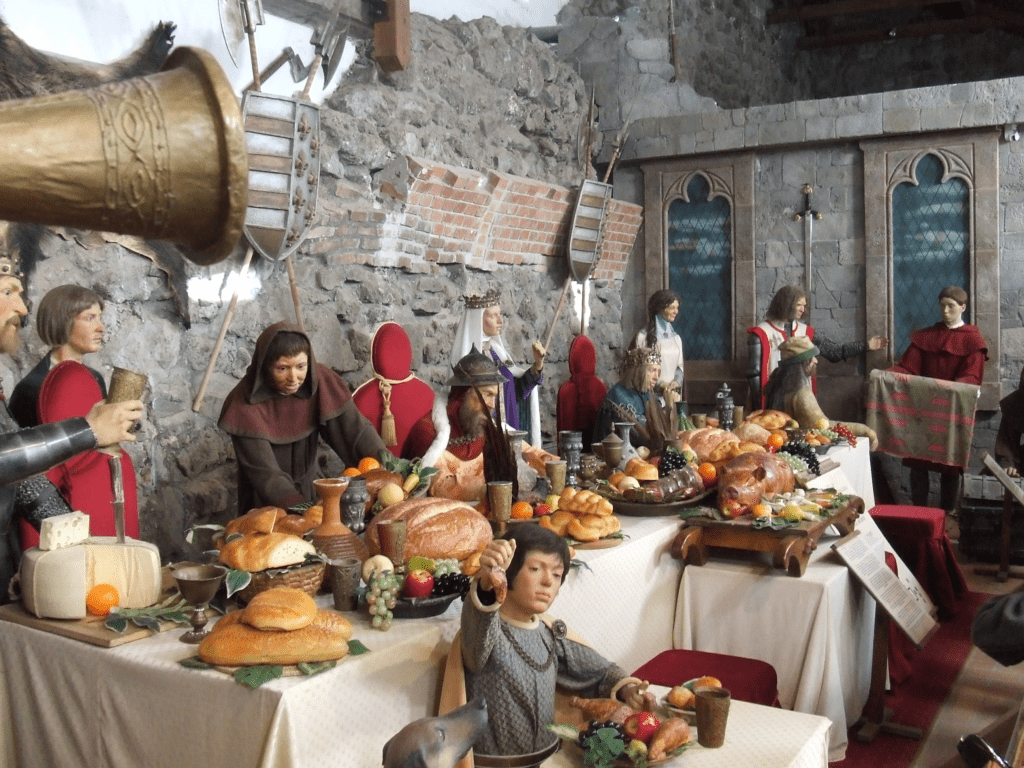Imagine medieval British royalty having a meal. What does it look like? For most people, it probably evokes a large table filled with every food you can imagine, especially meaty foods and game. Historians could have a similar idea — after all, several texts describing Anglo-Saxon elites eating large quantities of meat were found. But the texts may be a bit misleading.

Sidney Sussex College archaeologist Tom Lambert and bioarcheologist Dr. Sam Leggett, currently working at the University of Edinburgh, published two studies that shed new light on Anglo-Saxon England (the period before Vikings came to England). It started with one presentation from Leggett that intrigued Lambert. Leggett had analyzed hard evidence: chemical traces of diets from the bones of around 2,000 people that lived in England in the 5th to 11th centuries. She then analyzed the information available about these people, looking for evidence of social status.
Leggett was expecting to find a link between social status and protein intake: the rich medieval Britons would be the ones that would presumably consume more meat and, in those times when diets were quite limited, this would translate to more protein. But there was no correlation to be found. In fact, based on these chemical traces, the diet of the rich looked very similar to the diets of the poor.
“I’ve found no evidence of people eating anything like this much animal protein on a regular basis. If they were, we would find isotopic evidence of excess protein and signs of diseases like gout from the bones. But we’re just not finding that,” Leggett explained in a press release.
“The isotopic evidence suggests that diets in this period were much more similar across social groups than we’ve been led to believe. We should imagine a wide range of people livening up bread with small quantities of meat and cheese, or eating pottages of leeks and whole grains with a little meat thrown in.”
For Lambert, this was a shock. Lambert had seen several historical texts hinting that the medieval elites were indeed consuming more meat. So what was going on?
A key bit of evidence came from a food list compiled during the reign of King Ine of Wessex (c. 688-726). The detailed food list includes 300 bread rolls — so researchers assumed that the list would be for a feast of 300 people. They then calculated what the average menu would have been like for the feast participants. They found that each guest would have received an estimated 4,140 kcal (the average intake for a person is around 2,000 kcal) — a feast indeed. About half of this would have been animal protein (mutton, beef, salmon, eel, poultry, cheese). The list also included honey and ale.
Some historians suspected that the list would have been a general shopping list for the people of a village, but in light of the new findings, that doesn’t seem to add up. Instead, it seems that kings and their inner circle would have still mostly consumed a diet based on cereals, but enjoyed occasional feasts such as the one described above (if these feasts were a regular occurrence, there would be chemical traces of it).
Archaeological evidence also tells us a bit about what the feasts would have been like. Whole oxen were roasted in pits, ale flowed, and hundreds of people would have been invited.
The fact that so many people would have attended this type of feast is also significant.
“Historians generally assume that medieval feasts were exclusively for elites. But these food lists show that even if you allow for huge appetites, 300 or more people must have attended. That means that a lot of ordinary farmers must have been there, and this has big political implications,” Lambert says.
The feasts were also likely to play a key political role. Kings in this early medieval period are thought to have received food from pleasants in their kingdoms. This is an ancient form of tax called “feorm”, or food rent. Many historians assumed that this feorm was the primary source of food for the kings and their inner circle. But when Lambert looked at the way feorm was discussed in various old texts, he found a different interpretation. Lambert believes feorm refers to a single feast that the peasants would throw for their king — the epic feasts mentioned above.
This interpretation implies that the king would have personally traveled to this feast, which gives it a very different connotation.
“We’re looking at kings traveling to massive barbecues hosted by free peasants, people who owned their own farms and sometimes slaves to work on them. You could compare it to a modern presidential campaign dinner in the US. This was a crucial form of political engagement.”
When all the information is pieced together, it could have far reaching implications for our understanding of medieval society at the time. Firstly, the idea that the day’s elite would constantly eat a lot of meat seems exaggerated or simply not true. When they did eat a lot of meat, it was at feasts thrown for them. These feasts played an important role in showing loyalty and strengthening the bond between royalty and their subjects.
The two researchers are now eagerly awaiting the publication of more isotopic data, especially from the Winchester Mortuary Chests, which is thought to potentially contain the bones of several Anglo-Saxon royalty. This could open up a new window into the lives of England’s medieval rich and famous and it will be interesting to see if this analysis confirms the researchers’ theory
Both studies have been published in the journal Anglo-Saxon England:
S. Leggett & T. Lambert, ‘Food and Power in Early Medieval England: a Lack of (Isotopic) Enrichment’; Anglo-Saxon England (2022). DOI: 10.1017/S0263675122000072
S. Leggett & T Lambert, ‘Food and Power in Early Medieval England: Rethinking Feorm’, Anglo-Saxon England (2022). DOI: 10.1017/S0263675122000084






